Nothing Found
Sorry, no posts matched your criteria
Sorry, no posts matched your criteria
Sorry, no posts matched your criteria
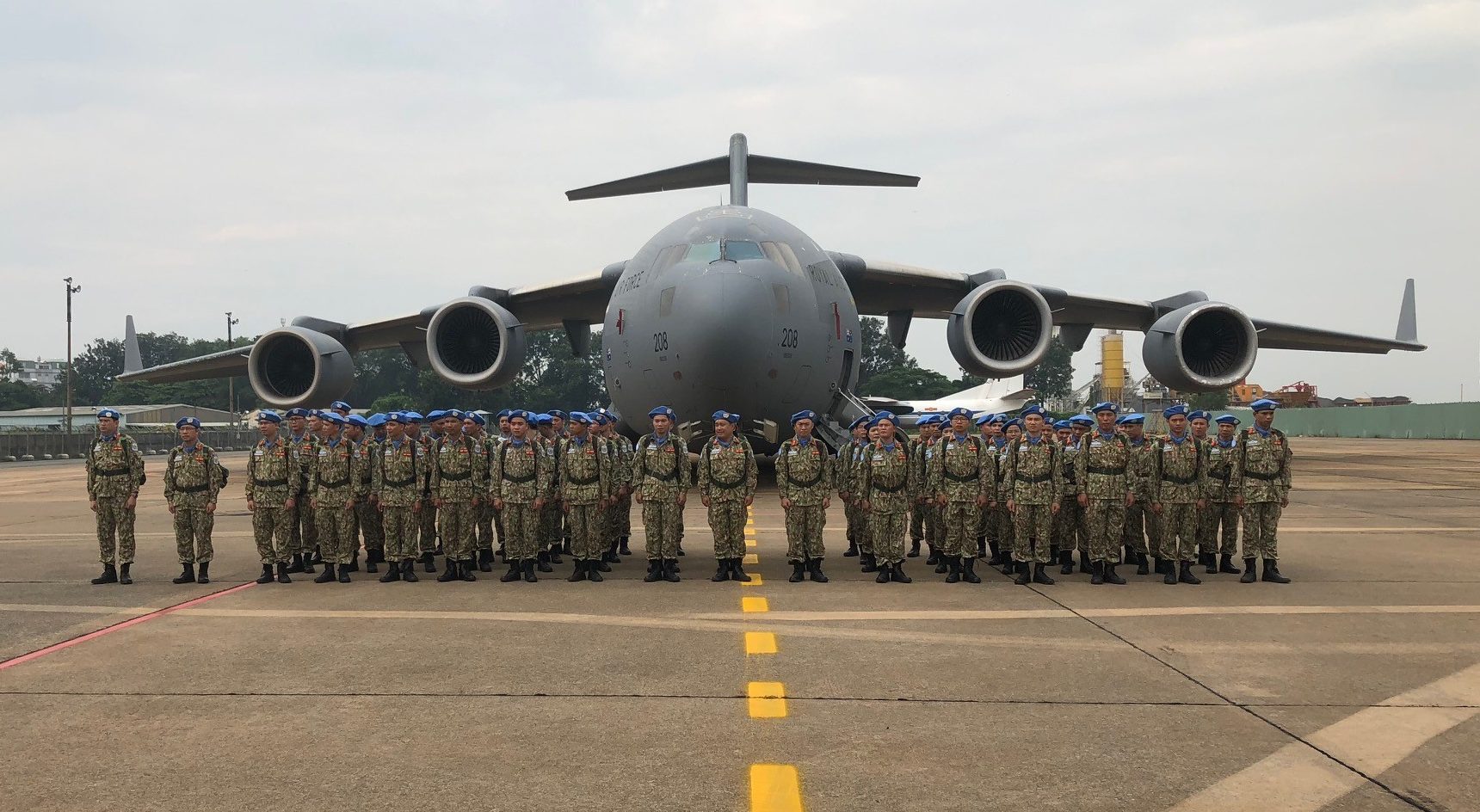
The elevation of the Australia-Vietnam relationship to the highest diplomatic level opens opportunities for deeper defence cooperation, especially the expansion of defence industry.
On 7 March, after the conclusion of the ASEAN-Australia Special Summit in Melbourne, Vietnam’s Prime Minister Pham Minh Chinh made an official visit to Canberra where he and Prime Minister Anthony Albanese issued a joint statement on the elevation of the Australia-Vietnam relationship to a comprehensive strategic partnership (CSP).
The agreement on a CSP includes a section on defence cooperation that pledges to expand current education and training programs, practical exchanges and peacekeeping support. Cooperation in peacekeeping will be elevated to a peacekeeping partnership. Since the establishment of defence cooperation relations in 2010, a remarkable 3500 Vietnam People’s Army officers have graduated from Australian-funded training in Australia and Vietnam.
Under the new CSP, defence cooperation also will be expanded to include defence industry, maritime security, information and intelligence sharing, strengthening maritime cooperation, and enhancing cooperation in cyber-security and critical technology, including through cyber security capacity-building initiatives to address cyber security threats.
The commitment to expand defence industry collaboration with Vietnam is timely. In February 2021, the 13th National Congress of the Vietnam Communist Party adopted a resolution of far-reaching importance for the modernisation of the Vietnam People’s Army. This resolution set the objective to ‘build a streamlined and strong Army by 2025, and a revolutionary, regular, advanced and modern People’s Army by 2030‘. It was assumed that Vietnam would rely on Russia to supply big ticket military platforms and defence technology.
However, Russia’s invasion of Ukraine a year later put paid to Vietnam’s plans as it faced the possibility of severe Western sanctions. Vietnam’s arms procurements have dropped to an all-time low as it marks time. In addition, Ukraine’s resistance to Russian military forces gave pause in Vietnam about its assumptions about the future of modern warfare in an era of drones, unmanned maritime platforms, cruise missiles, electronic warfare and missile defence.
This new strategic situation has opened two major opportunities for Australia.
First, it can expand defence industry cooperation with Vietnam in niche technology areas to assist in capacity-building to counter the new challenges and threats now on display in the Ukraine.
Second, Australia can initiate discussions with the United States, Japan and South Korea bilaterally and multilaterally—perhaps a new informal quadrilateral dialogue—to coordinate defence cooperation with Vietnam.
These opportunities build on a gradual shift in Vietnam’s strategic circumstances and perceptions over the past two decades. To comprehend the opportunities, it is useful to review how Vietnam has altered strategic course.
In 2001, Vietnam began to structure its foreign relations by negotiating strategic partnerships with its closest Cold War allies, Russia, China and India, while also seeking to ‘diversify and multilateralise‘ its external relations. Over the next decade and a half, a three-tiered hierarchy emerged consisting of comprehensive partnerships, strategic partnerships and comprehensive strategic partnerships, the highest level. China, Russia and India were upgraded to the exclusive top tier.
Six years after raising relations with India to a CSP, Vietnam suddenly raised relations with the Republic of Korea to a CSP in December 2022 followed by the United States (September 2023) and Japan (November 2023), and now Australia. The US, which was only a comprehensive partner, gazumped plans by Vietnam and Australia to elevate their strategic partnership in 2023 by agreeing with Vietnam to skip the intermediate stage and go directly to the CSP level.
In just 15 months Vietnam has expanded its constellation of three CSPs to seven by including the US and three of its closest allies in the Indo-Pacific. The fast-paced expansion of strategic ties to the West points to the change in Hanoi’s worldview and underscores the potential for coordination on the full defence cooperation agenda. This flurry of CSP signing is all the more extraordinary when we consider that three of the four partners (the US, Australia, and ROK) had troops on the ground during the Vietnam War.
Agreements on CSPs expand and deepen the scope of cooperation mapped out in the two lower-tier partnership agreements. All of Vietnam’s new comprehensive strategic partnership agreements include a separate section on defence cooperation.
The Vietnam-Republic of Korea joint statement on their CSP contains a section detailing increases cooperation on politics, defence and security, and promoting strengthening defence cooperation through technology, defence industry, and education and training.
The joint leaders’ statement on elevating US-Vietnam relations to a CSP, contains a separate section on defence and security that welcomes ‘further cooperation in defense industry and defense trade in accordance with each side’s conditions through mutually agreed mechanisms‘. The leaders’ statement also commits the US ‘to assist Vietnam to develop its self-reliant defense capabilities in accordance with the needs of Vietnam and established mechanisms‘.
The joint statement on the Vietnam-Japan CSP, which was fashioned as a document for ‘peace and prosperity in Asia and the world‘, contains a 15-point section on cooperation in security and national defence. The two leaders agreed on ‘transferring defence equipment and technology to the Ministry of National Defense of Vietnam‘. They also agreed to assign relevant agencies to discuss the content of Japan’s new Official Security Assistance (OSA).
The task of implementing commitments under these agreements will be complex from both an administrative and diplomatic point of view. Vietnam will need to tread cautiously to take advantage of the new avenues of defence cooperation without offending old friends and incurring strategic risks.
But of the four new comprehensive strategic partners, Australia is well placed to encourage and facilitate coordination. Australia has earned considerable trust in Vietnam because of a long history of engagement and policy consistency.
Australia and Vietnam established official defence relations in early 1998 and exchanged defence attaches in 1999 and 2000, respectively. A major turning point in defence relations was reached in 2010 with the signing of a memorandum of understanding on defence cooperation. Since 2012, Australia and Vietnam have convened a joint foreign affairs and defence strategic dialogue at deputy secretary/deputy minister level. The two sides also hold annual defence cooperation talks, defence policy dialogue and a 1.5 track dialogue. The first formal meeting of defence ministers took place in Canberra in March 2013.
In March 2018, Australia and Vietnam issued a joint statement to establish a strategic partnership that covered cooperation in political matters; economics and development; defence, law, justice, intelligence and security; education, science and technology; labour, social affairs and culture, and people-to-people links; and regional and international affairs.
The section on defence cooperation committed the two parties to an annual meeting of defence ministers to facilitate high-level dialogue.
After raising bilateral relations to a strategic partnership, Australia and Vietnam adopted a ‘joint vision on further defence cooperation’. Funding for Australia’s defence cooperation program stands at $4.15 million in 2023-2024. The program supports a big agenda of strategic dialogue and information exchange; continued assistance with Vietnam’s peacekeeping deployment to the UN Mission in South Sudan; education and training, including English language instruction; maritime security, including annual naval port visits; and Army and Air Force engagement.
At the recent ASEAN-Australia summit, Albanese announced several new initiatives to implement the government’s Southeast Asia Economic Strategy to 2040—a $2 billion Southeast Asia investment financing facility, appointing 10 ‘business champions’ to facilitate greater commercial links and a ’landing pad’ in Ho Chi Minh City to bolster Australian technology exports.
The Albanese Government will now have to consider topping up funding for its defence cooperation program so it has the requisite expertise to expand defence industry cooperation with Vietnam. This means assigning more personnel with appropriate expertise to the defence attaches’ office at the Australian Embassy in Hanoi. The business champion for Vietnam will need to be supported by a specialist on government policy on defence exports. The landing pad in Ho Chi Minh City should have a specialist office in Hanoi dedicated to defence industry commercial sales.
Numerous observers have pointed to the cost effectiveness of diplomacy. Australia now needs to take advantage of a valuable diplomatic opening and ensure that it is fully resourced.
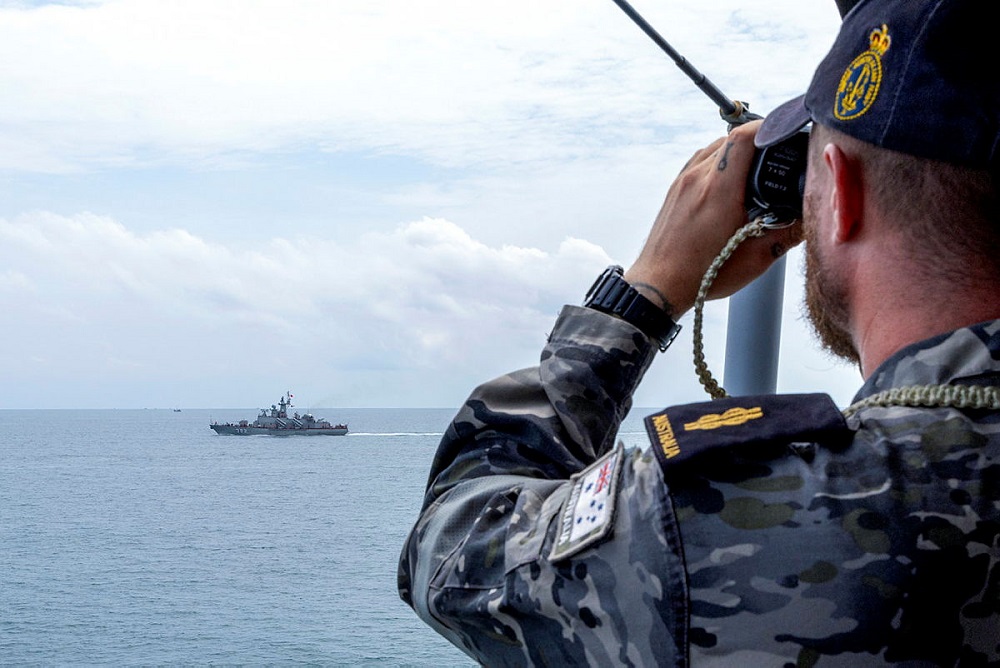
War in the Indo-Pacific is a real possibility. Increased competition, a growing trust deficit between global and regional powers and potential miscalculations heighten the danger. There needs to be a more engaged Australian discussion on conflict-escalation risks and how they might be managed.
Today I examine these issues in a new ASPI special report: Escalation Risks in the Indo-Pacific: A review for practitioners.
Policymakers and leaders need to understand escalation risks as they manage Australia’s relationship with the US, China, North Korea and Australia’s key regional defence partners over coming decades. In rhetoric and in action, Australia also needs to be attentive to how the acquisition and employment of our own new capabilities—strike missiles, evolving cyber capabilities and nuclear-propelled submarines—affect strategic stability dynamics in a fast-changing world.
This report addresses key priorities for the Australian Government. Australian ministers and senior officials have consistently called for governments across the region to use their agency to shape great-power dynamics, including supporting the development of so-called ‘guardrails’ to manage strategic competition between China and the US.
The Russian invasion of Ukraine has heightened concern about escalation risks in general terms. While there are many important lessons to be learned from that conflict, it’s essential that similar concerns are understood by Australian policy- and decision-makers as they relate to our key partners and our geography.
The first and principal aim of the report is to provide a review and discussion of various escalation risks in the Indo-Pacific. This is a complex issue which can be approached from multiple directions, drawing on a vast and rich literature which can help us think about the challenges. But for the historical reasons—among them that Australia has not had to think too hard about crisis management and escalation risks in recent decades—much muscle memory has been lost.
I argue against a rosy view of strategic stability in Australia’s region and suggest there are four main reasons we should remain concerned that crises and escalation pathways could be very difficult to control. These are: the ambiguous nature of maritime capabilities, novel technologies, unknowns in the nuclear balance and simple human frailty.
There is no reason for complacency. Taken together, these factors mean that there are all-too-imaginable possibilities for inadvertent and accidental escalation around flashpoints like the Korean peninsula, Taiwan, and in the East and South China Seas. Moreover, the maritime nature of the Western Pacific as a military theatre, combined with emerging technologies like hypersonics, means that decision makers could face very strong pressures toward pre-emption in a crisis. Put more simply, the fear-driven pressure to ‘shoot first’ could be very strong and very dangerous.
The report also identifies policy options for mitigating those concerns. Australia certainly cannot manage these risks alone, and we shouldn’t exaggerate Australian influence over the various factors influencing strategic stability. Nonetheless, the potential consequences are so serious that significant regional players, Australia included, cannot be bystanders. These are not just issues for the US and China alone. Indeed, there is a history of Australia playing a constructive role in this area.
Accordingly, the report makes three recommendations. First, Australian policy makers should support the establishment of appropriate crisis-management mechanisms. Second, Australia should continue and improve crisis exercises, in which national decision-makers should participate. Thirdly, it is important that there is continued investment in understanding escalation thresholds.
It’s important to be up front that my emphasis in this report is on Australian and allied capabilities and concepts. To borrow some military jargon, the report is focused on ‘blue’ (one’s own side) and not on ‘red’ (potential adversaries). I encourage further research and discussion about the escalatory implications of what our potential adversaries are doing. Conflict and contest are always two-sided (or many-sided) affairs, and the actions we take—even in combination and coordination with allies and partners—can’t determine outcomes on their own.
Moreover, the risks discussed here can never be eliminated. If deterrence is to be a significant part of the answer to our security challenges over coming decades, then the management of escalation risks will be an ongoing imperative.
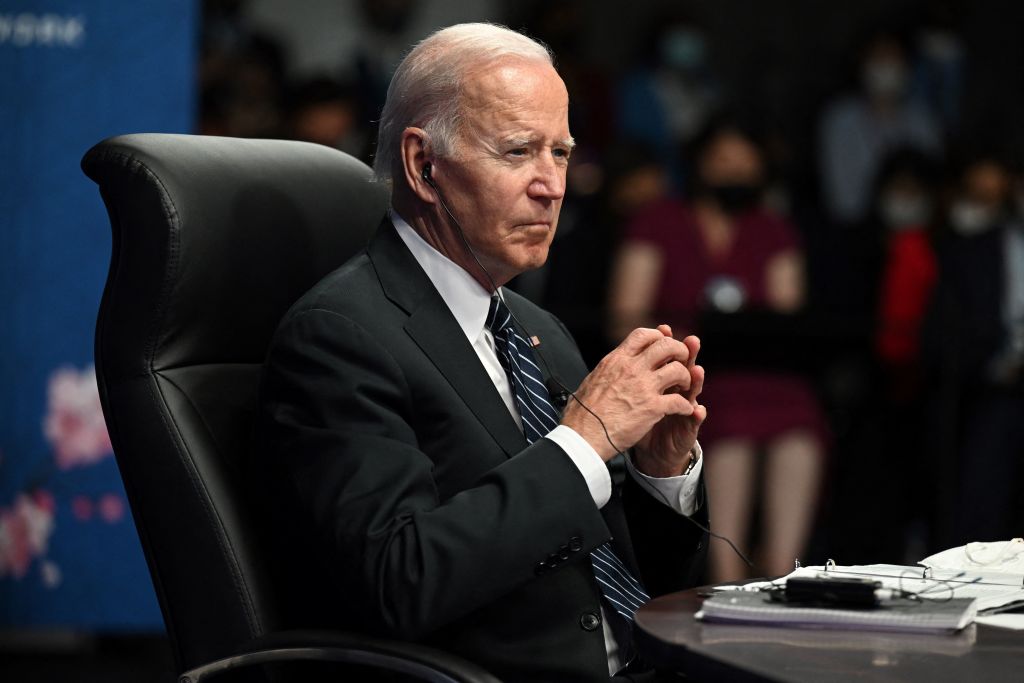
America’s economic isolationism is increasingly entrenched, with President Joe Biden’s administration no longer supporting the trade policies advocated by US multinational corporations, retreating instead to a nativist protectionism.
Creating the conditions for the global expansion of US multinationals had been at the heart of US international economic and political strategy since the end of World War II.
The Biden administration’s U-turn last month on digital trade policy was a shock both to the US business community and to the nations that had been negotiating digital trade agreements with the US on the basis of its long-established position of lowering the barriers to digital commerce.
The US government last month walked away from the digital trade negotiations of both the World Trade Organization and the Indo-Pacific Economic Framework (IPEF). Both had been pursuing agreements that would have prohibited all restrictions to the flow of data across borders, the forced disclosure of source codes and algorithms, and requirements to establish local data centres.
Australia, Japan and Singapore all supported these measures, accepting US arguments that lowering the barriers to e-commerce would foster its growth to everyone’s benefit and were left stranded by the US about-face.
The New York Times cited the secretary general of the International Chamber of Commerce, John Denton, saying: ‘The term we would use is “gobsmacked”. We don’t understand what is going on.’
The Biden administration was influenced by Democrats in Congress who believed the measures gave too much power to the technology giants. The US government wants to reserve its own right to regulate these companies and their data flows.
As well as abandoning its negotiations on IPEF’s digital commerce agreement, the administration decided it wouldn’t proceed with the broader IPEF trade discussions after Democrats complained that it didn’t include enforceable labour and environment provisions.
IPEF was a Biden administration creation, designed to fill the policy vacuum left by the Trump administration’s decision to walk away from the Trans-Pacific Partnership free-trade agreement in 2016.
IPEF was intended to be a new kind of international policy framework, setting standards for cooperation among countries on the environment, tax and transparency, supply chains and trade. The US attracted 13 Indo-Pacific nations to sign up to it.
It was explicit at the outset that the agreement wouldn’t provide members with improved access to the US market, which would have required unattainable congressional approval. Instead, the trade section was to cover trade facilitation, labour standards, regulatory practices, agriculture and the digital economy. In the US, it was to be implemented by executive order, rather than by legislation.
Australia and Japan had hoped that agreement on these issues might be a bridge to get the US to join the TPP’s successor, the Comprehensive and Progressive Agreement for Trans-Pacific Partnership. Instead, the Biden administration’s decision to walk away from the trade discussions it had initiated repeats the experience of the TPP, on which Asia–Pacific nations spent years arduously negotiating with the US only to have it abandon the venture at the 11th hour.
Donald Trump has made it clear that the remnants of the IPEF agreement, which he said was worse for the US economy than the TPP, wouldn’t survive if his bid to regain the presidency in 2024 succeeded.
‘It’s worse than the first one, threatening to pulverize farmers and manufacturers with another massive globalist monstrosity designed to turbocharge outsourcing to Asia,’ he said.
The US Business Roundtable, which is the peak business lobby group, criticised the decision to abandon the IPEF trade negotiations, as well as the broader policy reversal on digital trade rules.
‘High-standard free trade agreements are vital to advancing the interests of American businesses, farmers, ranchers and workers abroad,’ it said, adding that the decision to abandon negotiations on digital trade ceded leadership over the framing of digital trade rules to competitors (meaning China) and undermined economic and national security interests.
The TPP, which was designed by the Obama administration to cement the place of US business in the Asia–Pacific region, to the exclusion of China, was, like the IPEF digital trade negotiation, framed with the interests of US multinationals to the forefront.
There were challenging discussions over the extension of pharmaceutical patent protection—at one stage the US was pressing for big changes to Australia’s Pharmaceutical Benefits Scheme—and over protection for the US media and entertainment industries. The CPTPP, which was signed in 2018 by all the original members of the TPP except the US, removed those provisions.
With both IPEF and the TPP, agreements that unambiguously favoured US multinationals were abandoned in the face of opposition in Congress from both Democrats and Republicans. It is a long way from 1953, when the president of General Motors, Charles Wilson, was able to tell Congress: ‘What was good for our country was good for General Motors, and vice versa. The difference did not exist. Our company is too big. It goes with the welfare of the country.’
The change reflects a view that while trade liberalisation may indeed have benefited US multinationals, it came at a cost of US domestic manufacturing and the communities that depended on it. Trump’s election to the presidency in 2016 represented a political backlash against the brand of globalisation that had been championed by US multinationals. Biden defeated Trump in 2020 partly by appealing to manufacturing workers in Pennsylvania, Michigan and Wisconsin.
The rejection of trade agreements is consistent with the US decision to sabotage the World Trade Organization’s appeals tribunal by vetoing all new members until it lost its quorum; its use of national security provisions to impose punitive tariffs on steel and aluminium imports, including from the European Union and Japan; and its retention of the Trump administration’s steep tariffs on Chinese goods.
Instead, the big pieces of economic legislation under the Biden administration have been the Inflation Reduction Act, which, among other things, pours US$370 billion into domestic clean-energy subsidies, and the CHIPS and Science Act, which funnels US$280 billion to domestic microchip research and manufacturing. ‘When the federal government spends taxpayers’ dollars, we’re going to buy American: American products made in America, including American component parts,’ Biden said.
For Australia, 90% of whose exports and 80% of whose imports are traded with Asia, the US’s inward turn is not an immediate economic threat but, as critics charge, it opens the way for China to assert its role as the principal economic partner for the nations of Asia and the Pacific.
Perhaps more fundamentally, it raises a question about the US’s strategic commitment to the Asia Pacific region. The TPP was to have been the centrepiece of President Barack Obama’s ‘pivot’ to Asia, which was to include both a strengthening of US economic influence in the region and a greater military presence. IPEF was the TPP’s pale shadow. If the US no longer places a priority on advancing the interests of US business in the Asia–Pacific, will it see the need to continue underwriting the region’s security?
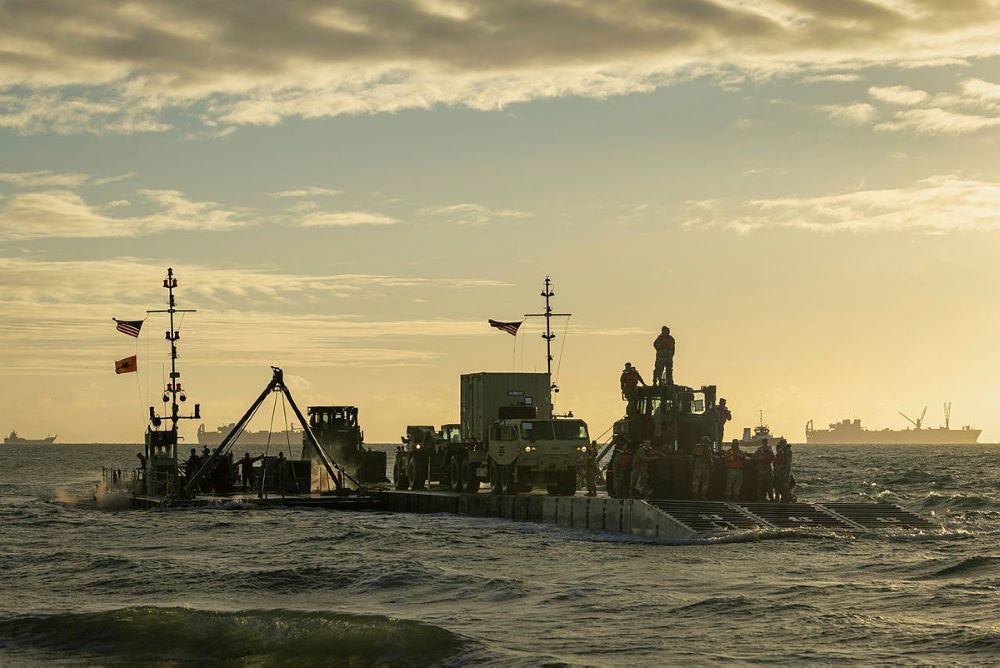
The re-emergence of great-power competition and a deteriorating strategic environment are forcing the US Army to rethink not just its approach to land warfare but also its future role alongside the US Marine Corps in key regions around the globe. Nowhere is this transformation more apparent and meaningful than in the Indo-Pacific, where the People’s Republic of China poses the most acute challenges.
A new ASPI report, US land power in the Indo-Pacific: opportunities for the Australian Army, released today, finds that the implementation of the US Army’s multi-domain operations doctrine and reorganisation is driving a greater emphasis on joint exercises and ensuring there are no gaps in defence cooperation among allies and partners in deterring Chinese aggression.
The concept of multi-domain operations is not new. It’s partly an evolution of previous conceptual frameworks such as AirLand battle, full-spectrum operations and unified land operations, requiring the employment of long-range fires and non-kinetic capabilities against enemy air and missile defences. It aims to ensure that US forces can expand the battlespace and achieve mission success without an assured ability to dominate in each individual domain.
The codification of the doctrine is designed to position the US Army as the key force that joint force commanders need to hold critical terrain, signal America’s commitment to allies and partners, and defeat adversaries in close combat. This shift has advanced the use of multi-domain taskforces to address these functions at scale.
Multi-domain taskforces are an integral part of the US Army’s push to build coalitions as a means to complicate China’s decision-making and minimise China’s advantage of compact lines of manoeuvre, communications and logistics. As US Army Secretary Christine Wormuth told an audience in Washington in March, the branch intends to commit more combat-credible forces to the region and establish theatre distribution centres in Guam and potentially Australia, Japan and the Philippines. If these efforts are successful, the US Army will be able to support other forces by providing logistical hubs in the region.
US Army Pacific, America’s theatre army for the Indo-Pacific, is contributing to concepts for strategic competition with China through two primary campaigning activities. The first involves conducting in-theatre sustainment rehearsals to increase joint readiness and enhance allied and partner capacity to deny human and geographical terrain to an adversary. The second effort involves establishing pre-positioned stocks and leveraging security force assistance brigade operations to test for security cooperation continuity with partner countries that currently don’t host US land forces. These developments hold important insights for key US allies, including Australia and Japan.
Australia’s new unifying strategic approach to national defence and the high degree of convergence this has with US defence strategy offer a timely window of opportunity for the Australian Army to work more closely with US land forces.
The ongoing optimisation of the Australian Army for long-range strike, missile defence and littoral lift creates opportunities for deepening the US–Australia alliance in the land domain, particularly as the heightened focus on the immediate region implies that Australia’s land-force contributions will be in archipelagic Southeast Asia and of an increasingly maritime and amphibious quality.
Australia’s defence strategy rightly prioritises national defence, but this does raise questions about the capacity of an integrated Australian Defence Force to meet the future strategic needs of the alliance. Given that neither the US nor Australia can deter China alone, it’s important that the Australian defence establishment and military leaders consider how a transformed and multi-domain-capable Australian Army should work with US land forces to deter conflict during competition and crisis.
One option is for Australia and the US to investigate ways to jointly employ, deploy and logistically support long-range hypersonic weapon systems in Australia. Expanding on the two nations’ successful cooperation on the development and testing of hypersonics would send a purposeful signal to Beijing that Australia possesses a deterrent capability at a range to defend its northern approaches and support US military operations in the South China Sea and East Asia. This would likely instil greater doubt in the minds of China’s military leaders about the attendant risks of aggression and likelihood of a collective response.
Littoral manoeuvre and logistics training is another priority area where the Australian Army could further cooperate with US land forces. Australia’s amphibious force will expand over the next decade with the addition of new medium and heavy littoral manoeuvre vessels through Project Land 8710. From 2024, the planned Australian Army littoral lift groups will support training and operations in the Northern Territory, northern Queensland and southeast Queensland could benefit from exercising with US marine littoral regiments in simulated expeditionary advance base operations or missions tailored to Australia’s national defence and strategic interests.
Australia’s efforts to build an integrated maritime strategic construct could also benefit from increased local training in maritime operations with the Japan Self-Defense Forces and with the new US Army watercraft systems capabilities in our northern approaches. Indeed, the US–Australia–Japan minilateral relationship offers many opportunities for expanded exercises and deployments now that the Japan–Australia reciprocal access agreement is in effect.
Most importantly, Washington’s interest in forward-basing more of its strike assets in Australia is now underpinned by a pressing need for the ADF to enact a strategy of denial in our immediate region. Positioning a full US Army brigade combat team equipment set in northern Australia, for example, would support both US and Australian national interests and additional actions to deter China from escalating to armed conflict. This avenue might not be a decisive factor in Beijing’s strategic calculus on its own, but it’s a natural fit with Australia’s defence strategy and could bolster the capacity of an integrated ADF to respond in the event of a regional crisis involving the US and China.
Amid increasing uncertainty, it’s paramount that the Australian Army, the US Army and the US Marine Corps expand their patterns of cooperation and prioritise the development of a shared understanding of coalition activity. This work should be mutually reinforcing and constitute part of Australia’s approach to managing risks and threats and balancing its contributions to deterrence in the Indo-Pacific.

The appointment of an anti-racism ambassador will supplement Australia’s efforts to integrate a more inclusive approach into its foreign policy, as seen in the Department of Foreign Affairs and Trade’s pursuit of an international gender equality strategy. A range of countries and multilateral bodies have already implemented racial equity policies, so Australia’s adoption of a racially sensitive lens in its foreign policy won’t be as difficult as some might envisage. DFAT should follow the example of the US State Department, which last year appointed its inaugural special representative for racial equity and justice.
The importance of adopting a race-conscious approach to foreign policy was highlighted in the aftermath of the 2020 murder of George Floyd. Governments and multilateral institutions around the world reacted to this undeniably horrendous act of racially motivated violence by introducing a range of anti-racism policies and initiatives. The European Union led the way, releasing an anti-racism action plan and appointing a coordinator for anti-racism mere months after Floyd’s murder. The UN Human Rights Council also responded quickly, implementing a resolution providing the Office of the High Commissioner for Human Rights with a mandate to examine systemic racism and human rights violations by law enforcement agencies against Africans and people of African descent.
In the US, the appointment of Desirée Cormier Smith as the first special representative for racial equity and justice was designed to ensure that the US’s foreign-policy processes and programs promote and advance the human rights of marginalised racial and ethnic groups. The role is also responsible for building global partnerships aimed at combating systemic racism, discrimination and xenophobia.
Despite the global progress made in enshrining racial equity and justice in foreign policy, Australia has continued to largely frame racism and racial discrimination as a domestic policy concern. The Australian Human Rights Commission has had a dedicated race discrimination commissioner since 1986 and is currently developing a national anti-racism framework. This year, the government appointed a panel to review its multicultural framework. Indigenous inclusion is also front and centre in Australia’s domestic efforts to improve racial justice, with a referendum to be held on 14 October on enshrining an Indigenous voice to parliament in the nation’s constitution.
Instead of confining racial equity to the realm of domestic policy, creating the role of anti-racism ambassador in foreign policy will provide significant benefits as Australia seeks to enhance its reputation and credibility in the Indo-Pacific region. Such a role would provide an opportunity for Australia to exchange insights with other countries on combating racism and discrimination. Issues such as social cohesion and migrant integration are not unique to Australia; other multicultural societies such as the US, Canada and New Zealand share similar challenges as settler-colonial states with Anglo-Celtic majorities. A key example is working together to tackle the transnational rise of white supremacism, a form of far-right extremism that has resulted in the radicalisation of Australians such as the Christchurch terrorist shooter who murdered 51 Muslim worshippers in 2019.
Australia can also use the appointment of an anti-racism ambassador to help reduce the neo-colonial overtones underpinning its engagement in the Pacific and elsewhere. Australia is the Pacific’s largest aid donor, but it has been criticised for attempting to dictate how Pacific countries run their governments and public institutions. To engender greater trust and support for Australia’s foreign policy objectives in the midst of geostrategic competition in the Indo-Pacific, Australia needs to ensure that regional partnerships are based on responsive and respectful two-way dialogue.
An anti-racism ambassador will also be useful in ensuring that Australia’s foreign-policy decision-making takes account of the racial plurality of the countries it works with. Understanding the often different and sometimes more adverse impacts that foreign-policy decisions can have on vulnerable minorities in the region is important. Australia’s approach to climate change is one area in which a racially sensitive approach is required, in light of the UN Intergovernmental Panel on Climate Change’s recent recognition of the unique issues faced by ethnic and religious minorities, Indigenous people and refugees in adapting to climate change.
While Australia has made significant strides on the domestic front, it can do more in its foreign-policy approach to engender racial equity. George Floyd’s murder was the catalyst for change in the foreign policies of a range of countries and multilateral bodies, but it should not stop there. Australia needs to similarly confront the existence of racial inequities both domestically and internationally by adopting a racially sensitive approach to foreign policy.
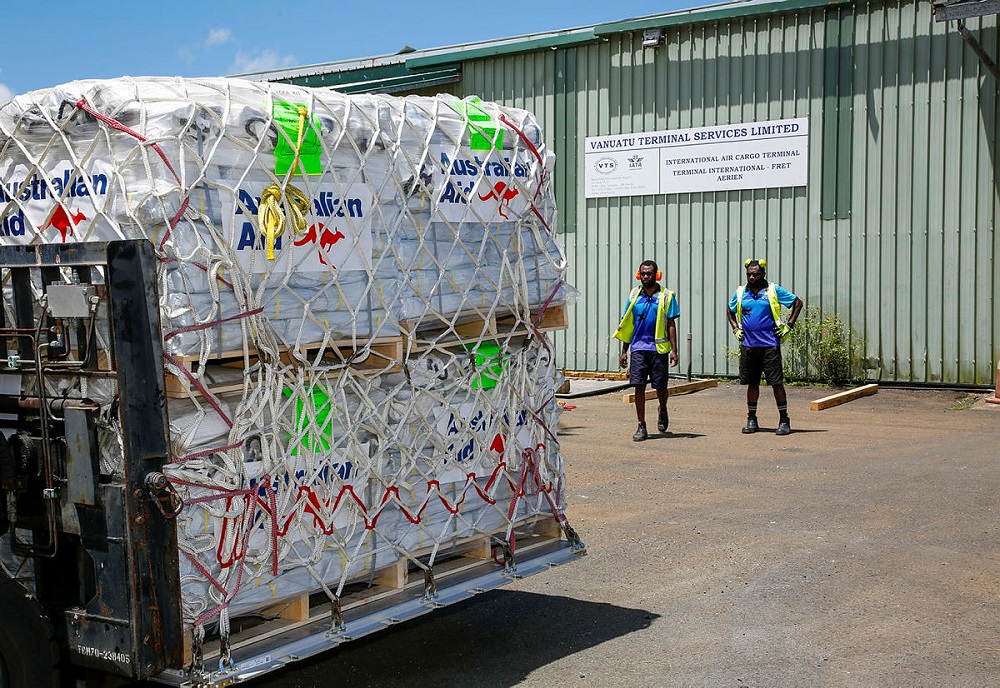
It will surprise some, and disappoint others, that the Department of Foreign Affairs and Trade’s new policy statement on international aid has drawn so little apparent interest from its intended beneficiaries.
Australia’s Pacific neighbours should have a keen interest in any statement on this, given Australia’s position as the region’s most significant source of official development assistance. Foreign Minister Penny Wong has been a frequent visitor to the Pacific to demonstrate the government’s elevated interest in the region and to assure the region that she has been listening to criticisms of the previous government’s approach to aid policies, which were seen as tight-fisted and misdirected.
Aside from a desire to demonstrate that there was a new game in town, in a decade characterised by changing trade patterns, Covid-19 and its impacts, demographic change and rapidly evolving geostrategic dynamics, a comprehensive review of Australia’s aid priorities is timely.
So, why has the document generated so few ripples across the Pacific?
There are several reasons.
From the perspective of the Pacific island regional states, one of the more important signals in Australia’s international development policy may be in its subtitle, which reads, ‘For a peaceful, stable and prosperous Indo-Pacific’.
This choice reinforces the perception that Australia sees its relationship with the Pacific islands firmly from a security perspective—and as just one part of an increasingly consistent Indo-Pacific strategy.
There’s little appetite among Pacific island countries for blurring the boundaries of their unique regional identity, especially by being absorbed into an area of focus that includes more than half of humanity.
Since ‘Indo-Pacific’ became a term of art in global geopolitics, Pacific island countries have had legitimate concerns about the idea marginalising them and their interests. Their small size and strategic importance make them vulnerable to manipulation, and they risk seeing their needs subsumed by the great-power security concerns this new mega-region’s conception alludes to.
Basically, for the Pacific island countries the idea of the Indo-Pacific carries considerable baggage, securitises discussion and invokes fear of Chinese influence and related global security tensions.
The strengthening of regional security arrangements such as the Quadrilateral Security Dialogue, the AUKUS agreement and the recent trilateral ties brokered between Japan, South Korea and the US only serve to fuel these concerns.
Referencing AUKUS particularly, Meg Taylor, a former secretary-general of the Pacific Islands Forum Secretariat, underlined the region’s wariness about the Indo-Pacific concept, saying that the Pacific ‘should have paid much more attention to the Indo-Pacific strategy as it emerged’.
The focus of Australia’s new aid policy appears to continue a trend where the Pacific region’s traditional Western friends seek to promote their Indo-Pacific security agenda through development assistance—the Partners in the Blue Pacific initiative was one example of this.
Another example emerged this month when Ely Ratner, the US assistant secretary of defence for Indo-Pacific security affairs, celebrated the reopening of the USAID office in Suva, Fiji, by referencing the same defence initiatives raised by Secretary of Defense Lloyd Austin in his address at the 2023 Shangri-La Dialogue.
Apart from the region’s caution towards the Indo-Pacific concept and securitisation, it can also reasonably doubt that the concept is a useful way of scaffolding the delivery of development assistance to the Pacific islands. But this appears more confected than substantive.
DFAT’s aid policy document regularly refers to the Indo-Pacific broadly as ‘our region’, but the development needs of Southeast and South Asian states require solutions that are impracticable in the Pacific island states.
This inherent diversity is clear from the document’s reference to working with and through ‘regional architecture’ even though there’s no inclusive and coherent Indo-Pacific regional framework. Instead, there are separate sets of regional architecture in the Pacific islands, Southeast Asia and South Asia which, to some extent, will be competing for Australian assistance.
Another key reason for the policy’s failure to make a big splash is the aspirational nature of the announced policy changes.
Informal feedback from island sources, while approving of the policy’s general objectives, questioned how commitments to priorities such as climate change, gender equality and public-sector collaboration will be translated into concrete actions with specific strategies and targets.
The document isn’t intended to be specific. Nevertheless, it does raise eyebrows over how its new policy settings will appear on the ground. The devil will always be in the detail and some examples of implementation imps are already visible.
For instance, the Pacific Australia Labour Mobility scheme is justly touted as a game-changer in Australia’s Pacific relations. It has made a huge difference to regional relations by providing Pacific workers access to employment in Australia. Building on the scheme makes great practical and diplomatic sense.
However, changes to the scheme to make it more worker-friendly have already generated pushback from agriculturalists on the grounds that they will force unworkable conditions on the Australian participants.
Similarly, the policy document’s assertion that Australia ‘will strengthen trade and business ties with the region, including through Australian banks’ raises questions as to how much influence the government can wield in the private sector.
A 2022 analysis found that Australian banks had largely abandoned the region, with only one of the four major banks, ANZ, retaining a physical presence in many Pacific island states. It’s hard to see Canberra having the levers to reverse this trend.
Locating Australia’s new development assistance policy in the Indo-Pacific concept probably won’t be a significant impediment to pursuing the positive policy goals of joining the regional consensus on climate change, embracing the Pacific’s 2050 Strategy for the Blue Pacific Continent, and making Australian aid easier to access.
However, it’s also unlikely to advance Pacific island countries’ acceptance of the Indo-Pacific as a regional identity, especially one that’s relevant to solving their problems and meeting their national needs.
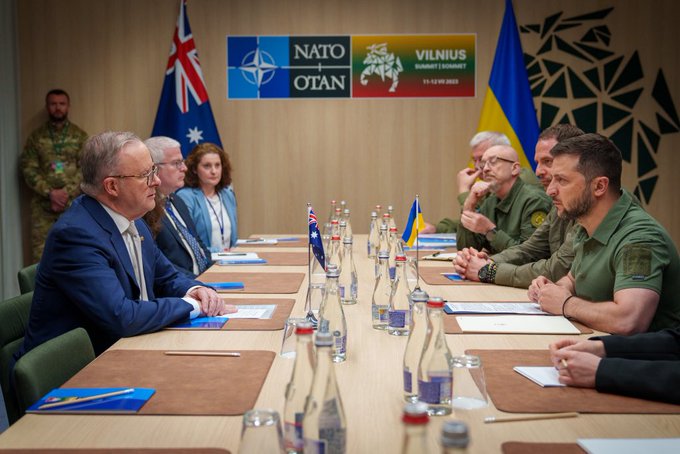
In the build-up to the 2023 NATO summit in Vilnius, Lithuania, the sense of history was palpable. The original NATO construct of 12 members, formed in 1949, is now 31 and will soon be 32 with Sweden’s accession. The alliance has endured plenty of instability in its lifetime, through the Cold War, the Suez crisis, the encircling of West Berlin and much more. Russia’s unrelenting 17-month war in Ukraine, a clear eye on China’s coercive behaviour and internal disagreements about the organisation’s role in the Indo-Pacific gave a sense of urgency and occasion to the summit, including for Australia.
The meeting was geared to tackle tough challenges, including Sweden’s and Ukraine’s bids for membership; security commitments to Ukraine, as a member or not; budgetary and preparedness challenges; future leadership, the Moscow–Beijing partnership; and Europe’s relationship with the Indo-Pacific.
There were initial doubts about whether Anthony Albanese would attend the summit and considerable speculation about what support Australia might provide Ukraine.
That conjecture was likely prolonged due to the government’s wish to save ‘announceables’ for the prime minister’s European trip—while the additions to Australia’s support may have been a consequence of public criticism of the assistance package announced last week.
Most of the uncertainties heading into the summit, including Australia’s ongoing support for Ukraine, were resolved. So how did it all end? Well, Sweden is in and Jens Stoltenberg has been extended as the organisation’s secretary-general, consistent with a view that NATO is only getting started with its support for Ukraine, not showing the fatigue about which so many had been concerned. Predictably, though, Ukrainian President Volodymyr Zelensky is disappointed.
The NATO summit communiqué reaffirmed the Bucharest decision to admit Ukraine as a member, but it declined to outline a clear pathway to membership. That drove the Ukrainian leader to describe the decision as ‘unprecedented and absurd’.
The summit communiqué stated: ‘We will be in a position to extend an invitation to Ukraine to join the Alliance when Allies agree and conditions are met.’ The precise nature of those conditions is not yet clear, but the writing was on the wall before the summit when key allies such as Germany and the US expressed reservations.
In some respects, it was a missed opportunity. Mapping out a pathway for Ukrainian membership should be part of a deterrence strategy to prevent Russia from thinking it will succeed merely by prolonging the war.
While Ukraine is understandably disappointed, Zelensky was happier with the assistance packages, including the gifts pledged by Albanese.
Recent Australian support has been provided in three tranches. In late June came the announcement of $110 million worth of military vehicles, ammunition and humanitarian assistance. On the eve of the Vilnius summit, the government revealed that a Royal Australian Air Force E7 Wedgetail airborne early warning and control aircraft would be deployed to Germany to help watch over the supply lines for lethal and humanitarian aid heading to Ukraine. That highly sophisticated aircraft is likely to be capable of much more.
The third in the trio of announcements came on the last day of the summit, when Albanese met with Zelensky and promised a further 30 Bushmaster armoured personnel carriers to help protect Ukrainian troops advancing across a mine- and bomb-strewn landscape.
While the package appears piecemeal and aimed at driving announcements, heart should be taken from the broader Australian public’s resolve for Ukraine and the government’s willingness to listen and increase its support.
But with no end to the conflict in sight, the Australian government now has the opportunity to evolve the current stop–start approach and consider what a continued meaningful contribution to Ukraine looks like. That won’t be easy, with the Department of Defence under significant financial pressure and the government insisting on the costs of supporting Ukraine being absorbed within Defence’s existing budget. But it’s a better approach than the current one of inadequate assistance, followed by public criticism and then more government support. Let’s skip the first two parts.
The one area of inconsistency centred on NATO’s relationship with the Indo-Pacific. Australia’s invitation to the summit as part of the Indo-Pacific four—with Japan, the Republic of Korea and New Zealand—was significant. And, importantly, the NATO communiqué contained strong words on Beijing’s coercive policies and subversion of the international rules-based order. In a sign of the ongoing global shift within NATO, the EU and many member states, Indo-Pacific security warranted a mention: ‘The Indo-Pacific is important for NATO, given that developments in that region can directly affect Euro-Atlantic security.’ This is a direct response to Beijing’s military build-up and economic coercion.
Yet the communiqué contained no mention of the plan, now in doubt, to open a NATO office in Japan. That outcome is likely to have followed French President Emmanuel Macron’s objection, which unfortunately seems to be based on attempts to mollify China and not on precedent, given the existence of offices in other regions such as Africa.
Regrettably, this shows tensions within the organisation on how to engage on Indo-Pacific security. That’s even more disappointing given that the main holdout, France, is a Pacific power. In the face of this tension, it’s vital that Australia not be silent and continue to be a proactive advocate of the inseparability of Euro-Atlantic and Indo-Pacific security. The national interest demands a year-round strategy, not just annual visits.
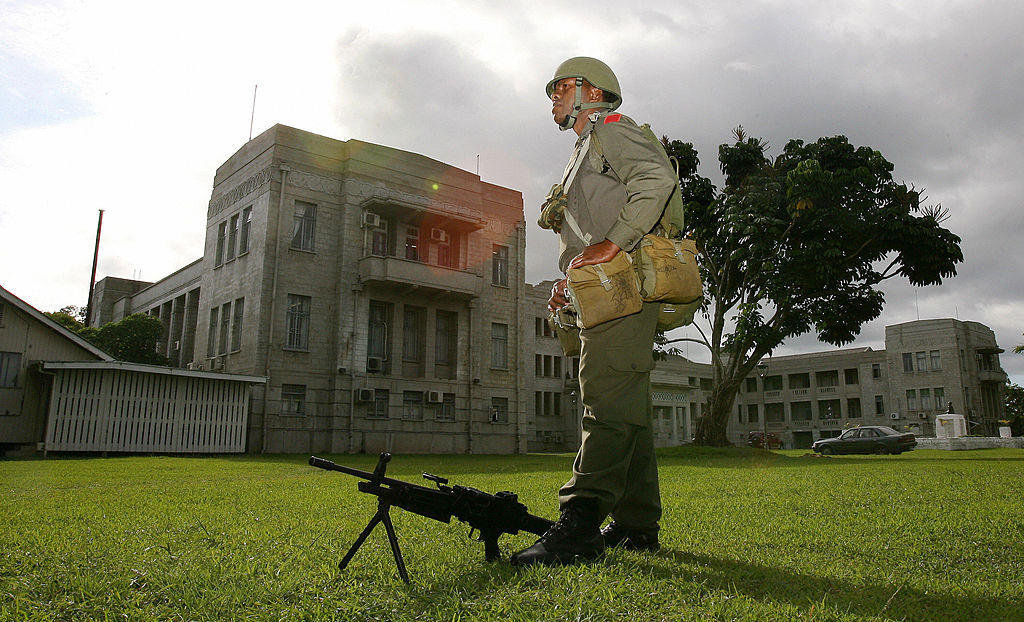
Almost inconceivably, the fact that the parliament of Fiji has been without an opposition for weeks has largely escaped the attention of the international media. Yet all 26 parliamentary members of Frank Bainimarama’s FijiFirst party have been suspended and barred from the chamber—without pay—since mid-May.
Predictably, given how deeply the meme of ‘coup culture’ has penetrated the Fijian psyche, this building political crisis has generated speculation about military intervention.
According to the local rumour mill, the decision to sideline the opposition aims to provide a pretext for the Republic of Fiji Military Forces (RFMF) to intervene using its role as guarantor of the 2013 constitution to return FijiFirst to power.
The logic of this speculation is difficult to follow though, especially as a look at the legalities involved suggests it may instead be a power play by Prime Minister Sitiveni Rabuka’s governing coalition.
The current political drama began on 17 May when the Fijian Elections Office’s acting supervisor of elections, Ana Mataiciwa, decided to suspend the registration of FijiFirst and three other smaller parties until and unless they presented audited financial statements to the acting Registrar of Political Parties, as required by the Political Parties (Registration, Conduct, Funding and Disclosures) Act (PPR Act).
The following day, the speaker of Fiji’s parliament, Ratu Naiqama Lalabalavu, barred the Frank Bainimarama-led FijiFirst Party from parliament. He ruled that all 26 FijiFirst members were not entitled to participate in proceedings as a consequence of their party’s suspended registration.
The idea of an RFMF intervention in this scenario enjoys credence due to a flawed understanding of both Fijian electoral law and the 2013 constitution, but these documents more strongly indicate that the decision is a power grab by the Rabuka Government.
The speaker’s decision to bar the 26 FijiFirst members from the parliament was based on the decision to suspend their party’s registration. However, the PPR Act only specifies that the registrar ‘may’ suspend the registration of a political party prior to full deregistration. So Mataiciwa was not obliged to suspend FijiFirst. She chose to do so. This is in contrast to the mandatory language of the PPR Act regarding deregistration. This states that the registrar ‘shall deregister’ a political party which has not remedied a specified breach of the PPR Act.
A similar question arises regarding the speaker’s decision to suspend FijiFirst’s parliamentary duties and pay. The speaker appears to have interpreted the PPR Act stipulation that a suspended party is ‘not entitled to any of the rights and privileges’ that a registered party enjoys in parliament.
But the PPR Act makes clear later that parliament is a special case. It states that the members of a deregistered political party ‘shall continue to serve for the remainder of their term as independents or as members of other political parties.’
This provision undermines critics who believed that party deregulation would result in the expulsion of the suspended FijiFirst members from the parliament, and that the party would be prevented from filling the resultant casual vacancies. Though it is true that if deregistration caused expulsion, there would no FijiFirst candidates available from the 2022 election to fill casual vacancies. With no FijiFirst candidates available, a national by-election would be required to fill the vacancies.
In this case, opposition critics would note that even if the military did not intervene, Prime Minister Rabuka’s People’s Alliance party would probably win a significant number of additional seats through this by-election, possibly even enough to govern in its own right.
It is questionable just how important a political advantage a by-election might be to Rabuka, even if it were possible. Unlike in Samoa or Solomon Islands, earning a supermajority would not allow constitutional change by the governing party, as Fiji’s constitution requires a vote in favour by three quarters of all registered voters.
Moreover, if the People’s Alliance did achieve a majority after such a by-election, the current tri-partite governing coalition would certainly collapse, creating a whole new set of grounds for political instability in both the parliament and the wider community.
On balance, the rumours regarding such extreme consequences of suspending nearly half of Fiji’s parliament are far-fetched, despite the seriousness of running a parliament without an opposition—especially in the leadup to the budget session.
Undoubtedly, the suspension of the FijiFirst members is a grave matter for the standing of the parliament as the central organ of governance in Fiji. There are also political and legal questions regarding the use of discretionary powers both by the acting supervisor of elections and the speaker.
But in terms of ‘coup culture’ fears, it is important to note that the current controversy would have to escalate to the level of a constitutional crisis to plausibly allow the RFMF to assert its claimed guardianship role over the 2013 constitution. Besides, FijiFirst will probably be able to submit the required financial acquittals in time to avoid deregistration, giving the episode the appearance of a storm in a teacup. Still, the affair will linger in the air, as suspicion and distrust take time to be allayed. In reality, they will just go back into political storage until the country’s next cause celebre.
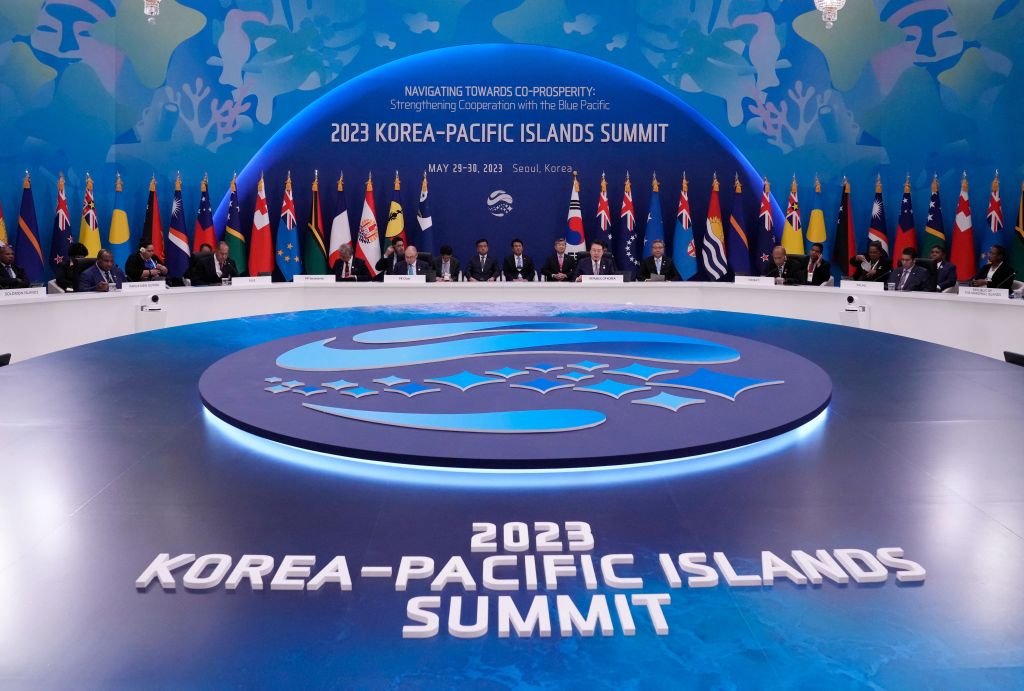
‘I’m trying to figure this out,’ said the journalist who had just phoned. ‘Why is South Korea holding a summit with Pacific leaders?’
That question was undoubtedly asked by more than one journalist, and others, as they sought to analyse the first Korea–Pacific Islands Summit held in Seoul on Monday. Korea hasn’t traditionally played a significant role in the region. While it is a dialogue partner of the Pacific Islands Forum, it directed only US$15.52 million of its US$4.25 billion of development finance there in 2020, representing 0.36% of the total amount spent by all donors. Only 0.3% of Korea’s imports come from the region, primarily from Marshall Islands, New Caledonia, Papua New Guinea and Tonga.
But, like its closest ally, the United States, and its partners, including Australia, Japan and India, Korea recently adopted an ‘Indo-Pacific’ strategy, which has encouraged it to focus more on the ‘Pacific’ part of that region. In its Strategy for a free, peaceful and prosperous Indo-Pacific region, released in December 2022, the Korean government said that it planned on ‘increasing our engagement with the Pacific Island Countries with whom we share the Pacific Ocean’. It later joined the US, Australia and others in the Partners in the Blue Pacific initiative, intended to better coordinate partner assistance.
And Korea is an attractive partner for Pacific island countries—highly developed, democratic and a known supporter of global climate action. At the summit, Korea agreed to double its development assistance to the region and to develop security cooperation in areas such as maritime, climate, energy, cyber and health.
Greater engagement with Korea also offers Pacific island countries another partnership option as they navigate the increasingly polarised strategic environment. Indeed, Korea learned the hard way, during the Korean War, what it means to be caught in the middle of great-power competition—a lesson it’s reminded of daily as it looks across the demilitarised zone at nuclear-armed North Korea.
Korea therefore may have valuable insights to share with Pacific island countries, which have expressed disquiet over the potential impacts of strategic competition playing out in their region. While Korea is an American ally, it has adopted a policy of ‘flexible diplomacy’ to carefully avoid going all-in on American initiatives designed to contain China. For example, the previous progressive Moon Jae-in administration decided against seeking membership of the Quad, and the current conservative Yoon Suk-yeol government has limited its outreach with the Quad to non-traditional security issues. Korea has also indicated that its priority would be defending itself against North Korea rather than assisting the US in the event of a war in the Taiwan Strait.
Notably, Korea’s Indo-Pacific strategy, like ASEAN’s Indo-Pacific Outlook, India’s vision for the Indo-Pacific and Japan’s Indo-Pacific plan, stresses the need for ‘inclusiveness’—a concept absent from the Indo-Pacific strategies of the US and Australia. This reflects that the proximity of Korea and its Asian neighbours to China means they can’t afford the same containment approach—a perception shared by many Pacific island countries.
The Korea summit also offered an opportunity for Pacific island countries to continue to build their relationships in Asia. At the moment, only Papua New Guinea is a member of APEC and an observer of ASEAN, but the Korea summit may help pave the way for greater direct engagement between Asia and the Pacific.
Following hot on the heels of third summit of the Forum for India–Pacific Islands Cooperation and the US–Pacific Islands Forum leaders’ dialogue, the Korea summit also demonstrates the effectiveness of Pacific island countries’ collective diplomacy, particularly under the auspices of the Pacific Islands Forum.
Forum leaders formally adopted the Blue Pacific narrative in their 2017 communiqué to represent ‘a long-term Forum foreign policy commitment to act as one “Blue Continent”’ and to facilitate ‘an assertive Pacific diplomacy’. And they have successfully encouraged partner states to adopt the language of the Blue Pacific narrative (it was incorporated into each of the India, US and Korea summit communications) and to pledge their support for the forum’s 2050 strategy for the Blue Pacific continent. Notably, the 2050 strategy stresses that Pacific island countries strive for ‘inclusive’ partnerships.
And this highlights a tension in the Blue Pacific narrative, and in Korea’s relationships in the Pacific and beyond: managing a preference for inclusiveness alongside the more assertive stance towards China taken by Pacific Islands Forum member Australia, and Korean (and Australian) ally the US. It was telling that, rather than sending Prime Minister Anthony Albanese or Foreign Minister Penny Wong to the summit, Australia sent Deputy Prime Minister Richard Marles—who is also its defence minister. While Marles’s interest in the Pacific islands region is well known and longstanding, the Australian media has focused on his bilateral meetings with Korean President Yoon Suk-yeol and Minister of National Defense Lee Jong-sup, describing his visit as being primarily for ‘high-level defence talks’.
Beyond defence, Korea must also balance the interests of Pacific island countries with those of other partners on issues such as climate change. Korea is Australia’s third-largest export market, particularly for gas and coal. Indeed, in the lead-up to the summit, the Pacific Climate Action Network issued a call for the Korean government to stop supporting fossil-fuel projects in Australia.
Korea’s interest in the Pacific islands region has been welcomed by Pacific leaders. But Korea will find that, like other relatively new players in the region, such as India, its Pacific islands diplomacy involves a challenging balancing act, and that increasingly assertive Pacific island countries will be watching carefully to see whether it stumbles.
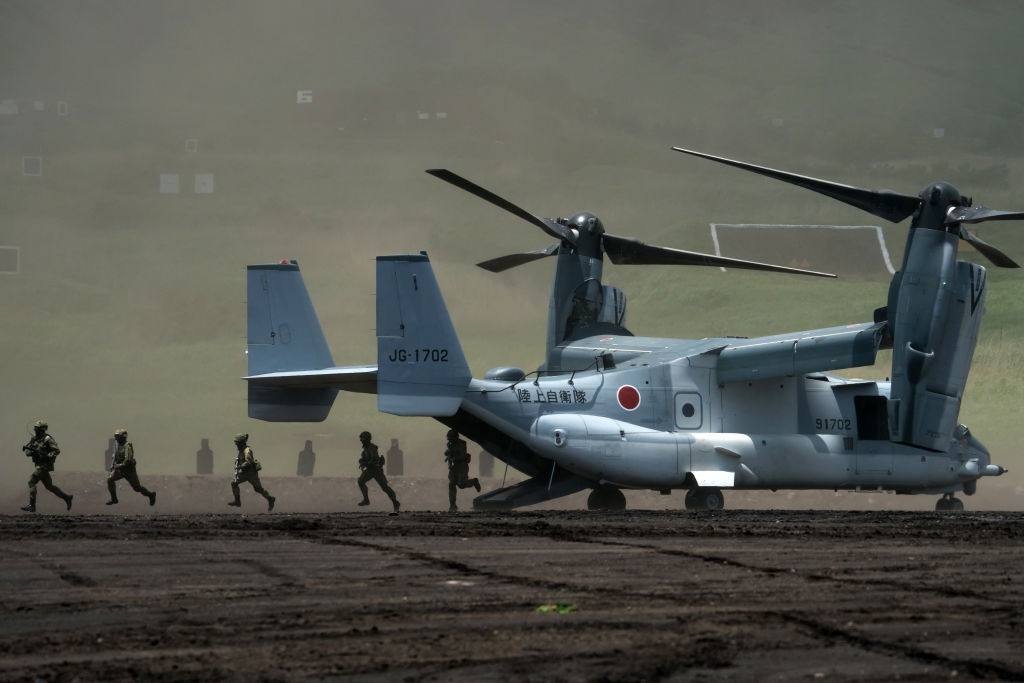
For decades, Japan has based its international clout on economic competitiveness, not military might. But, with China’s lengthening shadow darkening its doorstep, Japan now seems to be abandoning its pacifist post-war security policy—which capped defence spending at about 1% of GDP and shunned offensive capabilities—in favour of assuming a central role in maintaining security in the Indo-Pacific region.
Last month, Japan unveiled a bold new national security strategy, which includes a plan to double defence expenditure within five years. That spending—amounting to some US$320 billion—will fund Japan’s largest military build-up since World War II, and implies the world’s third-largest defence budget, after the US and China. Importantly, the new strategy includes acquisition of pre-emptive counterstrike capabilities, such as Tomahawk cruise missiles from the US, and the development of its own hypersonic weapons.
Japan began laying the groundwork for this shift under former prime minister Shinzo Abe, who was assassinated last July. On Abe’s watch, Japan increased defence spending by about 10% and, more significantly, reinterpreted (with parliament’s approval) the country’s US-imposed ‘peace constitution’ to allow the military to mobilise overseas for the first time since World War II. Abe also sought to amend Article 9 of the constitution, which renounces ‘the threat or use of force’ by Japan, but his efforts were stymied by popular protests.
Prime Minister Fumio Kishida has not run into the same resistance. On the contrary, opinion polls show that a majority of Japanese support the military build-up. A similar shift has taken place in Kishida himself, who was widely considered a dove when he was foreign minister—a label that he publicly embraced.
The impetus for this shift is clear. In 2013, the year Xi Jinping became China’s president, Japan’s national security strategy called China a strategic partner. According to the updated strategy, by contrast, China represents ‘an unprecedented and the greatest strategic challenge in ensuring the peace and security of Japan’. China’s incremental but unrelenting expansionism under Xi has rendered Japan’s pacifist stance untenable.
This is more apparent than ever in the wake of Russia’s invasion of Ukraine, which has intensified fears that China could pursue a military option against Taiwan, which, in geographical terms, is effectively an extension of the Japanese archipelago. Last August, five of the nine missiles China fired during military exercises in the waters around Taiwan landed in Japan’s exclusive economic zone. Japan understandably views Taiwan’s security as vital for its own.
Japan is not the only once-conciliatory power to respond to Xi’s muscular revisionism with a newfound determination to bolster its defences and forestall the emergence of a Sinocentric Indo-Pacific. Australia and India have embarked on the same path.
A similar trend toward militarisation has emerged among Japan’s other partners. Germany, another pacifist country, has pledged to boost its defence spending to 2% of GDP (the same level Kishida is targeting) and accept a military leadership role in Europe. The United Kingdom has already surpassed the 2%-of-GDP level, yet aims to double its defence spending by 2030. The US has just hiked its already-mammoth military spending by 8%. And Sweden and Finland are joining a reinvigorated NATO.
While Japan’s rearmament is more widely accepted than ever—and for good reason—it is unlikely to be enough to deter China’s expansionist creep. After all, despite having the world’s third-largest defence budget, India has been locked in a military standoff with China on the disputed Himalayan border since 2020, when stealth encroachments by the People’s Liberation Army caught it by surprise. Clashes continue to erupt intermittently, including just last month.
Unlike Russia, which launched a full frontal assault on Ukraine, China prefers ‘salami’ tactics, slicing away other countries’ territories with a combination of stealth, deception and surprise. The PLA’s so-called three warfares concept, which focuses on the psychological, public-opinion and legal aspects of conflict, has enabled China to secure strategic victories in the South China Sea—from seizing the Johnson South Reef in 1988 to occupying the Scarborough Shoal in 2012—while barely firing a shot.
Because China generally avoids armed conflict, it incurs minimal international costs for its actions, even as it unilaterally redraws the geopolitical map of the South China Sea and nibbles away at Bhutan’s borderlands, one pasture at a time. The government in Beijing managed to decimate Hong Kong’s autonomy without facing significant Western sanctions.
All this impunity has only emboldened Xi, who is now seeking to replicate the South China Sea strategy in the East China Sea by escalating maritime and aerial incursions to strengthen its claims to the Japanese-administered Senkaku Islands. It has even tried to police the waters off the Senkakus.
Japan’s response to China’s provocations has so far remained restrained, to say the least: no Japanese defence minister has so much as conducted an aerial inspection of the Senkakus, lest it anger China. Yet Japan’s embrace of Tomahawk missiles and hypersonic weapons doesn’t necessarily represent an effective means of resisting China’s hybrid warfare, either. For that, Japan must find ways to frustrate China’s furtive efforts to alter the status quo while avoiding the risk of open combat.
Japan’s push to become more self-reliant on defence should be welcomed. Improved defence capabilities will translate into a more confident and secure Japan—and a more stable Indo-Pacific. But if Japan is to ‘disrupt and defeat’ threats, as the national security strategy puts it, Japanese leaders must move proactively to beat China at its own game.